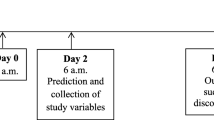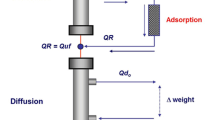Abstract
The patients with highly damaged renal functions following extracorporeal circulation (ECC) were reviewed. Markers such as serum and urine creatinine (SCr, UCr), blood urea nitrogen (BUN), alpha 1-microglobulin in urine (as a marker of renal tubular function, abbreviated as Uα1-m), microalbumin in urine (as a marker of renal glomerular function, abbreviated as UA1b) were measured in each cases. Twenty patients were selected with the maximum value of Uα1-mover 60 μg/dl during or after ECC. The patients were classified into three groups according to preoperative value of α1-m index (α1-m index (I)=Uα1-m/UCr × 100 mg/g Cr), and Albumin index (Albumin index (I)=UA1b/UCr × 100 mg/g Cr). Group I (n=13); α1-m I>10 and, A1b I≧50 (abnormal value of tubular and glomerular function), Group II (n=3); α1-m I≦10, A1b I≧50 (abnormal value of glomerular function), Group III (n=4); α1-m I≦10, A1b I<50 (normal value of tubular and glomerular function). Six patients in Group I required postoperative hemodialysis (HD) and one patient in Group II. No one required HD in Group III. These facts suggest that preoperative damage of tubular and glomerular functions may become prolonged or irreversible damages may occur after operation. HD is required frequently in patients with α1-m I level over 500 mg/g Cr, especially continuous HD may be needed in patient with α1-m I level over 1000 mg/g Cr.
Similar content being viewed by others
References
Zanardo G, Michielon P, Paccagnella A, Rosi P, Calo M, Salandin V, Da Ros A, Michieletto F, Simini G: Acute renal failure in the patient undergoing cardiac operation. Prevalence, mortality rate, and main risk factors. J Thorac Cardiovasc Surg 107: 1489–1495, 1994
α1-microglobulin, β2-microglobulin, N-acetyl-β-D-glucosaminidase. 36: 1215–1227, 1988
α1-Microglobulin (α1-m). 16: 551–554, 1987
α1-Microglobulin, β2-Microglobulin. 35: 1257–1263, 1987
39: 68–75, 1991
γ-GT. 18: 1056–1058, 1989
Corwin HL, Sprague SM, DeLaria GA, Norusis MJ: Acute renal failure associated with cardiac operations. A case-control study. J Thorac Carsiovasc Surg 98: 1107–1112, 1989
Hilberman M, Derby GC, Spencer RJ, Stinson EB: Sequential pathophysiological changes characterizing the progression from renal dysfunction to acute renal failure following cardiac operation. J Thorac Cardiovasc Surg 79: 838–844, 1980
Hilberman M, Myers BD, Carrie BJ, Derby G, Jamison RL, Stinson EB: Acute renal failure following cardiac surgery. J Thorac Cardiovasc Surg 77: 880–888, 1979
Kron IL, Joob AW, Meter CV: Acute renal failure in the cardiovascular surgical patient. Ann Thorac Surg 39: 590–598, 1985
31: 1390–1396, 1983
35: 2007–2013, 1987
37: 1311–1316, 1989
31: 21–24, 1991
31: 181–186, 1991
31: 1397–1406, 1983
31: 455–457, 1983
GFR, α1 β2 40: 1102–1106, 1991
2. 35: 1125–1128, 1989
Haptglobin. 20: 1186–1190, 1991
42: 1137–1141, 1994
α1, β2. 44: 233–238, 1986
Yu H, Yanagisawa Y, Forbes MA, Cooper EH, Crockson RA, MacLennan ICM: Alpha-1-microglobulin. An indicator protein for renal tubular function. J Clin Pathol 36: 253–259, 1983
Nogawa K, Kido T, Yamada Y, Tsuritani I, Honda R, Ishizaki M, Terahara K: α1 microglobulin in urine as an indicator of renal tubular damage caused by environmental cadmium exposure. Toxicology Letters 22: 63–68, 1984
Kido T, Honda R, Yamada Y, Tsuritani I, Ishizaki M, Nogawa K: α1-microglobulin determination in urine for the early detection of renal tubular dysfunctions caused by exposure to cadmium. Toxicology Letters 24: 195–201, 1985
Flynn FV: Assessment of renal function. Selected developments. Clin Biochem 23: 49–54, 1990
15: 319–323, 1987
44: 209–214, 1986
Hutchison AS, O’Reilly DSJ, MacCuish AC: Albumin excretion rate, albumin concentration, and albumin/creatinine ratio compared for screening diabetics for slight albuminuria. Clin Chem 34: 2019–2021, 1988
Author information
Authors and Affiliations
Rights and permissions
About this article
Cite this article
Narisawa, T., Murakami, A., Aiba, M. et al. Evaluation of highly damaged renal function following extracorporeal circulation —Usefulness of alpha 1-microglobulin index—. Jpn J Thorac Caridovasc Surg 46, 1097–1104 (1998). https://doi.org/10.1007/BF03217883
Received:
Accepted:
Issue Date:
DOI: https://doi.org/10.1007/BF03217883




